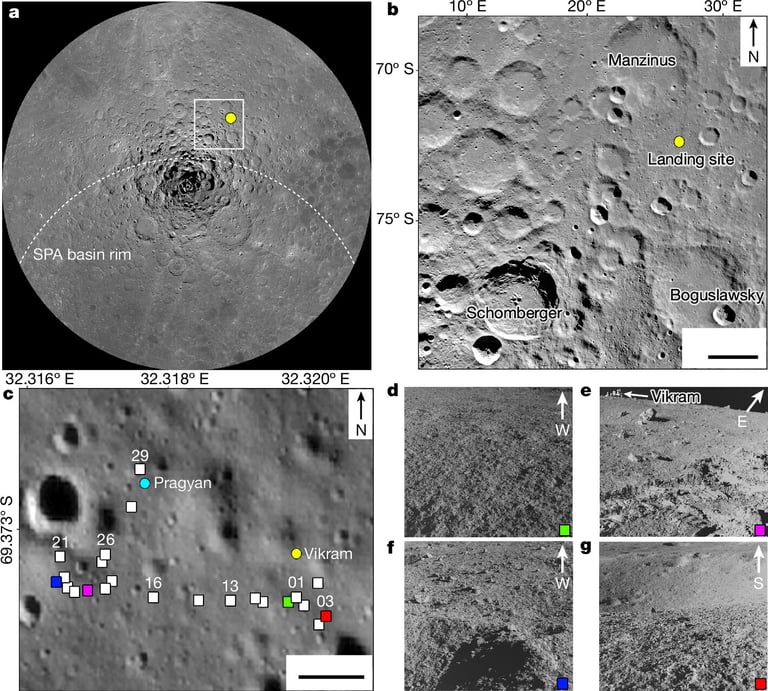Chandrayaan-3 Unveils Moon's Volcanic Past and Meteor Impact Secrets
August 21, 2024
India's Chandrayaan-3 mission, which successfully landed on the Moon's South Pole in August 2023, has provided groundbreaking insights into the Moon's geological history.
The mission utilized the Pragyan rover, which collected soil samples and data over ten days using an Alpha Particle X-Ray Spectrometer.
These soil samples have offered new evidence supporting the lunar magma ocean theory, suggesting that the Moon's surface was once a molten magma ocean shortly after its formation.
The findings confirm that the terrain's composition aligns with expectations from the lunar magma ocean hypothesis, indicating a layered crust where lighter minerals like ferroan anorthosite floated above denser materials.
Analysis revealed that the lunar regolith is primarily composed of ferroan anorthosite, a common mineral on the Moon, which corroborates previous orbital data.
Unexpectedly, the samples contained a significant amount of olivine, a heavy magnesium-based mineral, contrasting with earlier findings that showed higher amounts of pyroxene.
Researchers emphasize that further modeling is necessary to understand the implications of the olivine to pyroxene ratio in lunar geology.
Additionally, the rover's findings support theories of a massive meteor impact that created the South Pole-Aitken Basin over four billion years ago, one of the largest craters in the solar system.
The data collected by Pragyan represents the first in-situ measurements from the polar regions of the Moon, marking a significant achievement for the Indian space program.
Future Chandrayaan missions are in development, aiming to bring samples back to Earth for more detailed studies.
While the results are not groundbreaking, they provide valuable ground truth that enhances scientific understanding of the Moon's geological history.
The Moon's unique geological history, preserved due to the absence of plate tectonics, makes it a vital reference point for understanding planetary evolution.
Summary based on 9 sources
Get a daily email with more World News stories
Sources

BBC News • Aug 21, 2024
India's Chandrayaan-3 finds ancient magma ocean on Moon south pole
The Washington Post • Aug 21, 2024
India’s lunar lander unearths evidence the moon had a magma ocean
BBC News • Aug 21, 2024
India's Chandrayaan-3 finds ancient magma ocean on Moon south pole
Nature • Aug 21, 2024
India’s pioneering mission bolsters idea that Moon’s surface was molten